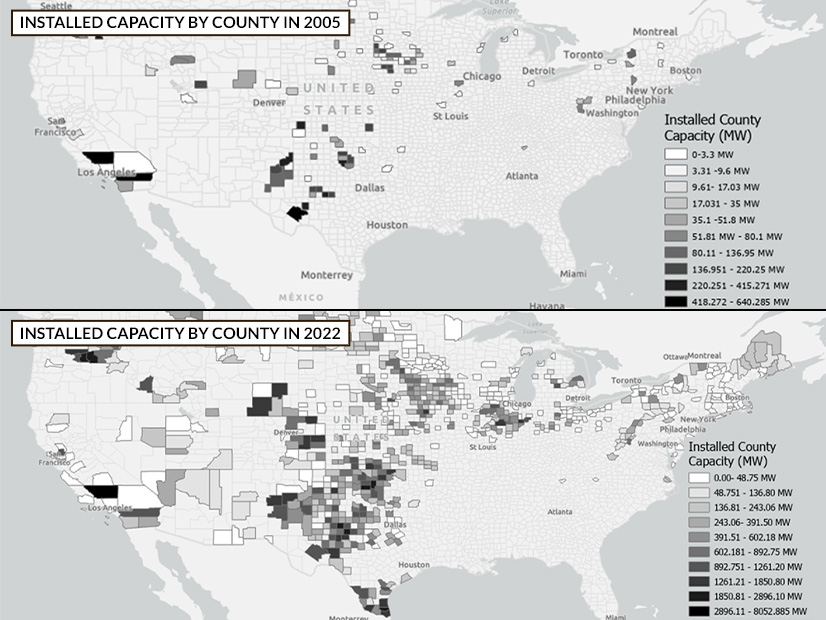NYISO on Dec. 13 presented its market design for dynamic reserves to the Business Issues Committee, which endorsed the concepts on the condition that issues including cost allocation and congestion revenues be discussed next year, as the ISO tests the new design.
The ISO’s current operating reserve requirements are static, based on the largest single source contingency.
A NYISO white paper in December 2021 proposed that the grid operator explore dynamically scheduling reserves, saying it was feasible to set reserve requirements based on the single largest contingency systemwide and using available transmission headroom. The paper said determining reserve requirements based on grid conditions and topology would better align market outcomes with system conditions by, for example, shifting reserve procurements to lower-cost regions as permitted by transmission capacity. (See NYISO Outlines Timelines for 2023 Projects.)
The proposed design is composed of five concepts, including use of individual generator shift factors — the ability of a generator to relieve transmission constraints — to meet locational reserve needs, monitoring about 20 key transmission interfaces and considering the day-ahead market (DAM) forecast load.
The ISO’s static locational reserve requirements assume the transmission system is fully scheduled.
NYISO’s presentation also discussed how various market elements like thunderstorm alerts, scarcity pricing and the correlated loss of multiple generators might be impacted by the reserve market changes.
NYISO plans to prototype the proposed design and finalize tariff language next year, with the expectation that the concepts will be deployed in 2026.
The ISO said elements such as forecast reserve shadow prices and DAM congestion rents will not be included in prototyping but will undergo review with stakeholders next year.
BIC stakeholders commended the ISO’s efforts in establishing a dynamic reserve market design. David Clarke, director of wholesale market policy at the Long Island Power Authority, said “this is really good and really innovative work.”
Pallas LeeVanSchaick, vice president at the ISO’s Market Monitoring Unit, Potomac Economics, similarly praised the ISO’s work. “The scheduling and optimization components are truly innovative and are really going to be helpful to the market in terms of ensuring that the market design is adaptable to changing conditions,” he said.
LCR Optimizer Market Design
The BIC also voted to approve changes to make the locational capacity requirements (LCR) optimizer more transparent and produce more stable results.
The LCR optimizer, implemented in 2019, establishes the least-cost LCRs for several downstate NYISO capacity zones, including New York City and Long Island.
The ISO proposed three changes. First, it suggests determining least cost options by adding up the incremental costs of individual units, which it calls the investment cost — or “area under the curve” — as the optimizer’s objective function. The ISO currently seeks to minimize total procurement cost, in which every megawatt of capacity is priced like the last megawatt.
The ISO’s second recommendation calls for determining net CONE curves without the level of excess (LOE) adder to simplify the optimizer’s formulation.
The final recommendation is to develop additional energy and ancillary services revenue modeling test points in the current demand curve reset project. While NYISO acknowledges that this aspect of the optimizer’s formulation has not been tested, it committed to providing updates on these testing efforts next year.
Michael Mager, a partner at Couch White, representing Multiple Intervenors, a group of large industrial, commercial and institutional energy consumers, asked about the timeline for initial results from the new testing. NYISO staff responded that these results could be expected in February or March.
Assuming the proposed changes improve the LCR optimizer’s results, the ISO aims to seek approval from the Management Committee in mid-2024 and expects these improvements will be used to determine zonal LCRs applicable for the 2025/26 capability year.
Capacity Accreditation Modeling
The BIC voted to recommend that the MC approve proposed tariff revisions presented by NYISO, which aim to improve capacity accreditation modeling by more accurately capturing attributes like natural gas constraints and correlated derates, as well as address issues raised by Potomac Economics. (See NYISO MMU Calls for Improved Shortage Pricing, More Capacity Zones.)
Resource adequacy analyses indicate that current modeling misrepresents the marginal reliability contributions of some resources and fails to capture metrics not represented in installed reserve margins and LCRs, resulting in inaccurate capacity accreditation factors and capacity accreditation resource class (CARC) calculations for certain resources. (See NYISO Previews Capacity Accreditation Modeling Work.)
The revisions seek to align the compensation capacity resources receive with their performance, availability and marginal contribution to reliability needs.
To address gas constraints, the ISO developed a process allowing gas units to make a “fuel characteristic election” on Aug. 1 prior to the start of the next capability year. This is based on the unit’s ability to partly or fully meet requirements for entry into a firm fuel CARC. Units seeking to be firm on gas must have a transportation contract covering the megawatts elected, with a contract path from a liquid receipt point to the burner tip during December, January and February.
Units with on-site fuel are required to have enough to operate at max output for 16 hours a day for six days in those same winter months. The first fuel characteristic election must be made by Aug. 1, 2024, and units failing to substantiate their level of firm supply may face a shortfall penalty.
Howard Fromer, representing Bayonne Energy Center, asked about the impact of these revisions on generation using hydrogen as a fuel source. NYISO staff clarified that these new requirements apply to any unit burning on-site fuel or fuel being delivered through a pipeline.
For correlated derates, NYISO proposes addressing issues identified in the MMU’s annual State of the Market report by applying ambient water-related deratings to units with once-through water cooling, adjusting for humidity in units with inlet cooling systems like combined and simple cycle combustion turbines, and sunsetting the capacity-limited resource program, as these emergency capacity resources are rarely committed.
NYISO will finalize the approved tariff language with the Installed Capacity Working Group and continue discussions around correlated derates. The expectation is to present these revisions to the MC in the first quarter of next year for final approval before filing them with FERC.
Transmission Congestion Contracts
The BIC also voted to approve revisions to the transmission congestion contracts (TCC) manual presented by NYISO that incorporate updated technical bulletins addressing modeling assumptions for certain phase angle regulators (PARs).
The TCC manual was last updated in October 2021.
The revisions include updating the modeling descriptions for the “Internal Con Edison PARs” to include the Vinegar Hill PARs (Technical Bulletins Nos. 254 and 255) and revising the modeling assumptions for the “East Garden City PARs” and “Hurley Avenue PARs” from fixed schedules to schedules optimized by the optimal power flow (Technical Bulletins Nos. 257 and 258).
November Market Operations
NYISO Senior Vice President Rana Mukerji presented the November market operations report, saying a “slight uptick” in gas prices slightly increased locational-based marginal price, from $28.10/MWh in October to $34.90/MWh in November. The natural gas index price at Transco Z6 NY was $2.20/MMBtu in November, up from $1.30/MMBtu in October.
Year-to-date average monthly energy prices, however, were 55% lower than the previous year, dropping from $89.97/MWh to $39.32/MWh. This decrease was driven by the continued decline in gas prices throughout the year, with natural gas prices down 54.3% year-over-year at Transco Z6 NY.



